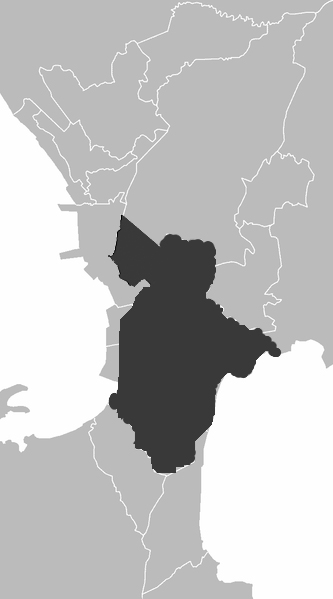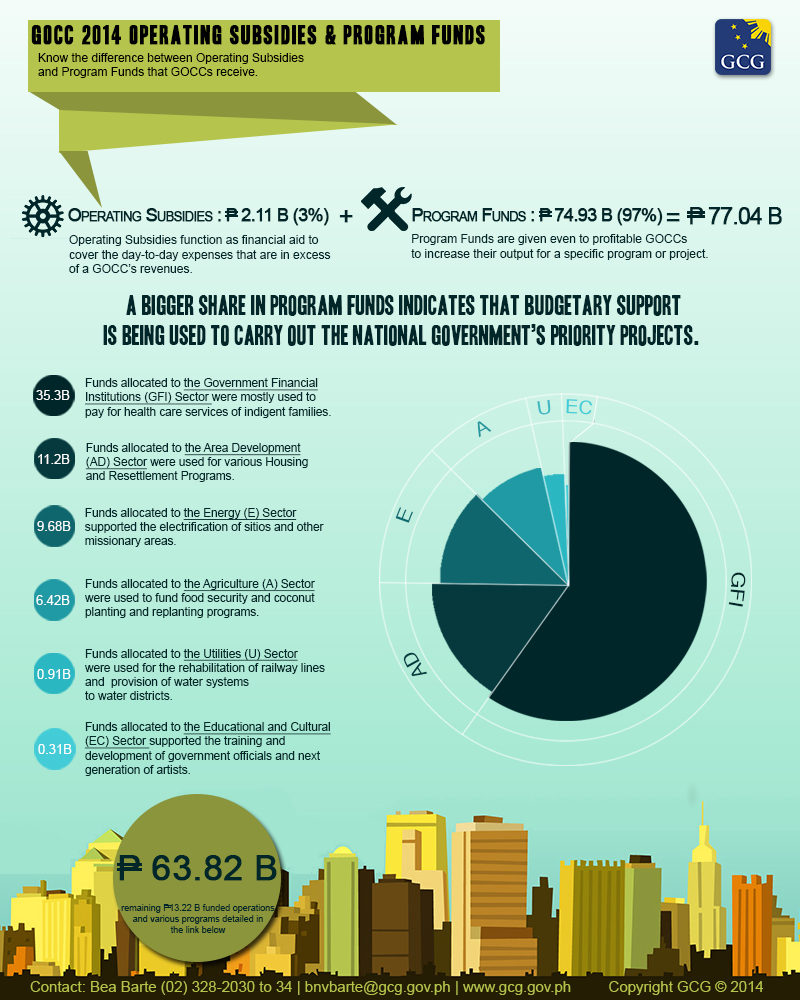|
Manila International Airport Authority
The Manila International Airport Authority (MIAA; fil, Pangasiwaan ng Paliparang Pandaigdig ng Maynila) is a government-owned and controlled corporation and agency under the Department of Transportation of the Philippines responsible for the management of Ninoy Aquino International Airport (NAIA) formerly Manila International Airport. On October 10, 2018, MIAA has achieved another milestone after obtaining its ISO certification under ISO 2001:2015 standards. The authority began its certification journey in 2008 when it first obtained its ISO certification under ISO 9001:2008 standards. Ranks for official personnel *Airport Police Senior Superintendent *Airport Police Superintendent *Airport Police Chief Inspector *Airport Police Senior Inspector *Airport Police Inspector Ranks for non-official personnel *Airport Police Officer III *Airport Police Officer II *Airport Police Officer I See also *Ninoy Aquino International Airport *Civil Aviation Authority of the Philippines ... [...More Info...] [...Related Items...] OR: [Wikipedia] [Google] [Baidu] |
Government-owned Corporation
A state-owned enterprise (SOE) is a government entity which is established or nationalised by the ''national government'' or ''provincial government'' by an executive order or an act of legislation in order to earn profit for the government, control monopoly of the private sector entities, provide products and services to citizens at a lower price and for the achievement of overall financial goals & developmental objectives in a particular country. The national government or provincial government has majority ownership over these ''state owned enterprises''. These ''state owned enterprises'' are also known as public sector undertakings in some countries. Defining characteristics of SOEs are their distinct legal form and possession of financial goals & developmental objectives (e.g., a state railway company may aim to make transportation more accessible and earn profit for the government), SOEs are government entities established to pursue financial objectives and devel ... [...More Info...] [...Related Items...] OR: [Wikipedia] [Google] [Baidu] |
Pasay
Pasay, officially the City of Pasay ( fil, Lungsod ng Pasay; ), is a 1st class Cities of the Philippines#Legal classification, highly urbanized city in the Metro Manila, National Capital Region of the Philippines. According to the 2020 census, it has a population of 440,656 people. Due to its location just south of Manila, Pasay quickly became an urban town during the History of the Philippines (1898–1946), American colonial period. History Early history In local folk history about the period before the arrival of Spanish colonizers, Pasay is said to have been part of Namayan (sometimes also called Sapa), a confederation of Barangay state, barangays which supposedly controlled territory stretching from Manila Bay to Laguna de Bay, and which, upon the arrival of the Spanish, eventually became known as Santa Ana de Sapa (modern day Santa Ana, Manila). According to these legends, the ruler of Namayan bequeathed his territories in what is now Culi-culi, Pasay, and Baclaran t ... [...More Info...] [...Related Items...] OR: [Wikipedia] [Google] [Baidu] |
Philippines
The Philippines (; fil, Pilipinas, links=no), officially the Republic of the Philippines ( fil, Republika ng Pilipinas, links=no), * bik, Republika kan Filipinas * ceb, Republika sa Pilipinas * cbk, República de Filipinas * hil, Republika sang Filipinas * ibg, Republika nat Filipinas * ilo, Republika ti Filipinas * ivv, Republika nu Filipinas * pam, Republika ning Filipinas * krj, Republika kang Pilipinas * mdh, Republika nu Pilipinas * mrw, Republika a Pilipinas * pag, Republika na Filipinas * xsb, Republika nin Pilipinas * sgd, Republika nan Pilipinas * tgl, Republika ng Pilipinas * tsg, Republika sin Pilipinas * war, Republika han Pilipinas * yka, Republika si Pilipinas In the recognized optional languages of the Philippines: * es, República de las Filipinas * ar, جمهورية الفلبين, Jumhūriyyat al-Filibbīn is an archipelagic country in Southeast Asia. It is situated in the western Pacific Ocean and consists of around 7,641 islands t ... [...More Info...] [...Related Items...] OR: [Wikipedia] [Google] [Baidu] |
Public Transport
Public transport (also known as public transportation, public transit, mass transit, or simply transit) is a system of transport for passengers by group travel systems available for use by the general public unlike private transport, typically managed on a schedule, operated on established routes, and that charge a posted fee for each trip. There is no rigid definition; the ''Encyclopædia Britannica'' specifies that public transportation is within urban areas, and air travel is often not thought of when discussing public transport—dictionaries use wording like "buses, trains, etc." Examples of public transport include Public transport bus service, city buses, trolleybuses, trams (or light rail) and Passenger rail transport, passenger trains, rapid transit (metro/subway/underground, etc.) and ferry, ferries. Public transport between cities is dominated by airlines, intercity bus service, coaches, and intercity rail. High-speed rail networks are being developed in many parts ... [...More Info...] [...Related Items...] OR: [Wikipedia] [Google] [Baidu] |
General Manager
A general manager (GM) is an executive who has overall responsibility for managing both the revenue and cost elements of a company's income statement, known as profit & loss (P&L) responsibility. A general manager usually oversees most or all of the firm's marketing and sales functions as well as the day-to-day operations of the business. Frequently, the general manager is responsible for effective planning, delegating, coordinating, staffing, organizing, and decision making to attain desirable profit making results for an organization (Sayles 1979). In many cases, the general manager of a business is given a different formal title or titles. Most corporate managers holding the titles of chief executive officer (CEO) or president, for example, are the general managers of their respective businesses. More rarely, the chief financial officer (CFO), chief operating officer (COO), or chief marketing officer (CMO) will act as the general manager of the business. Depending on the ... [...More Info...] [...Related Items...] OR: [Wikipedia] [Google] [Baidu] |
Government-owned And Controlled Corporation
In the Philippines, a government-owned and controlled corporation (GOCC), sometimes with an "and/or", is a state-owned enterprise that conducts both commercial and non-commercial activity. Examples of the latter would be the Government Service Insurance System (GSIS), a social security system for government employees. There are over 200 GOCCs as of 2020. GOCCs both receive subsidies and pay dividends to the national government. Under the GOCC Governance Act (Republic Act No. 10149; Government Owned and Controlled Corporations (GOCC) Governance Act of 2011), GOCCs are overseen by the Governance Commission for Government-Owned or Controlled Corporations (GCG). The Governance Commission is the "government's central advisory and oversight body over the public corporate sector" according to the Official Gazette of the Philippine government. The Governance Commission among other duties prepares for the president of the Philippines a shortlist of candidates for appointment by the presid ... [...More Info...] [...Related Items...] OR: [Wikipedia] [Google] [Baidu] |
Department Of Transportation (Philippines)
The Department of Transportation (DOTr; fil, Kagawaran ng Transportasyon) is the executive department of the Philippine government responsible for the maintenance and expansion of viable, efficient, and dependable transportation systems as effective instruments for national recovery and economic progress. It is responsible for the country's land, air, and sea communications infrastructure. Until June 30, 2016, the department was named Department of Transportation and Communications (DOTC; fil, Kagawarán ng Transportasyón at Komunikasyón}). With Republic Act No. 10844 or "An Act Creating the Department of Information and Communications Technology", signed into law on May 20, 2016 during the administration of President Benigno Aquino III, the Information and Communications Technology Office was spun off the Department of Science and Technology (DOST) and merged with all operative units of the DOTC dealing with communications, to form the new Department of Information and Com ... [...More Info...] [...Related Items...] OR: [Wikipedia] [Google] [Baidu] |
Ninoy Aquino International Airport
Ninoy Aquino International Airport (NAIA , ; fil, Paliparang Pandaigdig ng Ninoy Aquino or ''Pandaigdigang Paliparan ng Ninoy Aquino''; ), originally known and still commonly referred to as Manila International Airport (MIA), is the main international airport serving Manila and the metropolitan area of the same name. Located between the cities of Pasay and Parañaque, about south of Manila proper and southwest of Makati, NAIA is the main gateway for travelers to the Philippines and serves as a hub for AirSWIFT, Cebgo, Cebu Pacific, PAL Express, and Philippine Airlines, and as the main operating base for Philippines AirAsia. It is managed by the Manila International Airport Authority (MIAA), an agency of the Department of Transportation (DOTr). The airport is named after Senator Benigno "Ninoy" Aquino Jr. (1932–1983), who was assassinated at the airport on August 21, 1983. Officially, NAIA is the only airport serving the Metro Manila area. However, in practice, both ... [...More Info...] [...Related Items...] OR: [Wikipedia] [Google] [Baidu] |
MIAA Logo
MIAA may refer to: * Maine Intercollegiate Athletic Association, defunct athletic conference of schools in Maine * Manila International Airport Authority, transportation agency in the Philippines * Maryland Interscholastic Athletic Association, high school athletic conference for private schools in the Baltimore Metro area * Massachusetts Interscholastic Athletic Association, high school athletic association governing 33 varsity sports throughout Massachusetts * Michigan Intercollegiate Athletic Association, athletic conference of NCAA Division III schools in Michigan and Indiana * Mid-America Intercollegiate Athletics Association, athletic conference of NCAA Division II schools in Kansas, Missouri, Nebraska, and Oklahoma * TRNA dimethylallyltransferase TRNA dimethylallyltransferase (, ''tRNA prenyltransferase, MiaA, transfer ribonucleate isopentenyltransferase'', ''Delta2-isopentenyl pyrophosphate:tRNA-Delta2-isopentenyl transferase'', ''Delta2-isopentenyl pyrophosphate:transfer rib ... [...More Info...] [...Related Items...] OR: [Wikipedia] [Google] [Baidu] |
Civil Aviation Authority Of The Philippines
The Civil Aviation Authority of the Philippines (CAAP, ; fil, Pangasiwaan sa Abyasyong Sibil ng Pilipinas) is the civil aviation authority of the Philippines and is responsible for implementing policies on civil aviation to assure safe, economic and efficient air travel. The agency also investigates aviation accidents via its Aircraft Accident Investigation and Inquiry Board. Formerly the Air Transportation Office, it is an independent regulatory body attached to the Department of Transportation (Philippines), Department of Transportation for the purpose of policy coordination. History Legislative Act No. 3909, passed by the Congress of the Philippines on November 20, 1931, created an office under the Department of Commerce and Communications to handle aviation matters, particularly the enforcement of rules and regulations governing commercial aviation as well as private flying. It was amended by Act 3996 to include licensing of airmen and aircraft, inspection of aircraft conc ... [...More Info...] [...Related Items...] OR: [Wikipedia] [Google] [Baidu] |
Government-owned And Controlled Corporations Of The Philippines
State ownership, also called government ownership and public ownership, is the ownership of an industry, asset, or enterprise by the state or a public body representing a community, as opposed to an individual or private party. Public ownership specifically refers to industries selling goods and services to consumers and differs from public goods and government services financed out of a government's general budget. Public ownership can take place at the national, regional, local, or municipal levels of government; or can refer to non-governmental public ownership vested in autonomous public enterprises. Public ownership is one of the three major forms of property ownership, differentiated from private, collective/cooperative, and common ownership. In market-based economies, state-owned assets are often managed and operated as joint-stock corporations with a government owning all or a controlling stake of the company's shares. This form is often referred to as a state-owned e ... [...More Info...] [...Related Items...] OR: [Wikipedia] [Google] [Baidu] |



.jpg)

